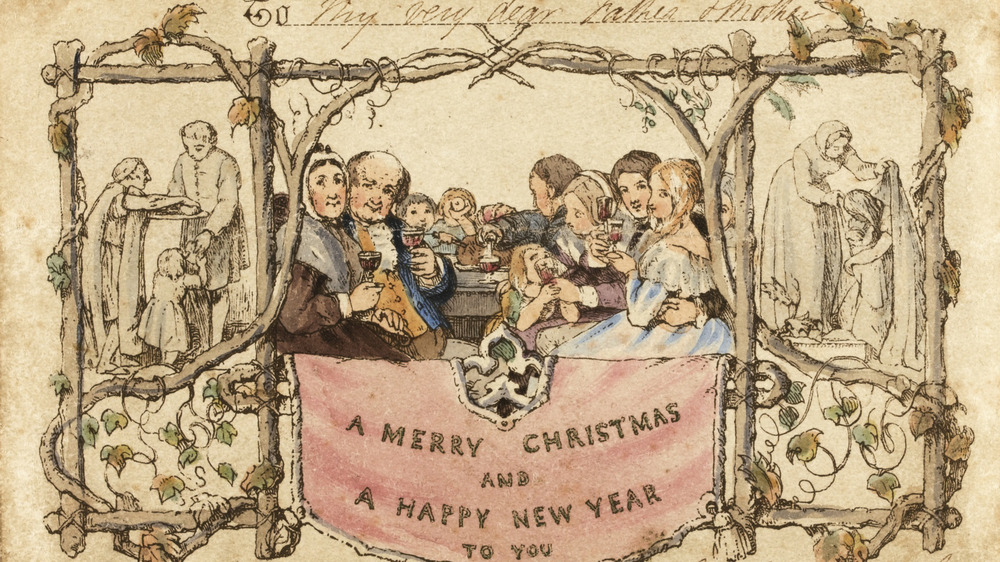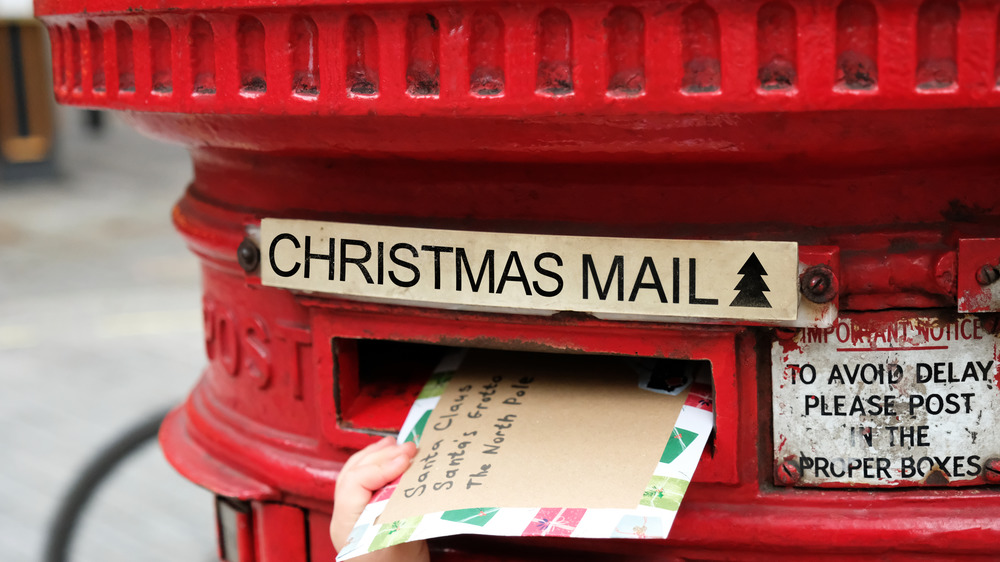The History Of Sending Christmas Cards Explained
Despite most of modern communication taking place via texts, messaging via apps, and, for some old-fashioned traditionalists, e-mail, mailing physical Christmas cards remains a popular and beloved custom that continues to stand the test of time. Where and when did this tradition originate?
According to Smithsonian magazine, a Victorian "educator and patron of the arts" named Henry Cole had an extremely active social life amid the elite of England. Cole was reportedly anxious about the number of letters he'd be receiving for the 1843 holidays from his numerous friends and acquaintances. It was a tradition to send Christmas and New Year's Day letters, and the British postal system had just introduced the "Penny Post," which allowed anyone to send a letter or card anywhere in the country with a penny stamp.
As it was considered rude not to answer personal mail, Cole needed to find a way to easily respond to everyone who had sent him a letter. He approached the artist J.C. Horsley and asked him to sketch a scene of family celebrating at a table surrounded by images of people helping the poor. He incorporated a blank "TO:" at the top with a space to write in a name as well as the generic message "A Merry Christmas and A Happy New Year To You" and made a thousand copies, thus creating the first Christmas card.
One man's idea becomes a popular trend
Within a few years, several other prominent Victorians had copied Cole's idea, but it took a few decades for the concept of Christmas cards to catch on and become the tradition that remains in place to this day. The first United States Christmas card is credited to a Prussian immigrant named Louis Prang, who had his own print shop in Boston, Massachusetts. Unlike Cole and Horsley's explicitly holiday-centric scene, Prang's 1875 card featured a painting of a flower and the simple message "Merry Christmas." This more subtle approach gave rise to a holiday card trend that eschewed depictions of nativity scenes or holiday celebrations and tended to feature "animals, nature, scenes that could have taken place in October or February."
By the end of the 1800s, Christmas cards were a widespread trend, with card companies holding competitions, with prizes for the best designs. Smithsonian suggests that the modern Christmas card industry began in 1915 when Kansas City's Hall Brothers company (which a decade later became Hallmark) created the standard "book" card design that was inserted into an envelope and included more room than a postcard but not enough that a full letter was necessary. The stereotypically colorful cards featuring holiday art came to prominence in the 1930s-1950s. Today, as reported by the United States Postal Service, people in the U.S. buy approximately 1.6 billion holiday cards each year, and holiday greeting cards accounted for 43 percent of household personal correspondence in 2018.

